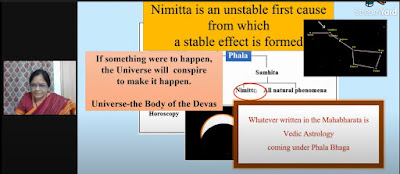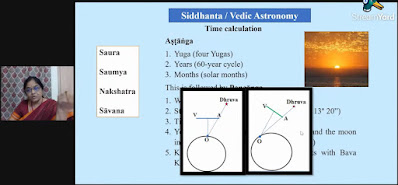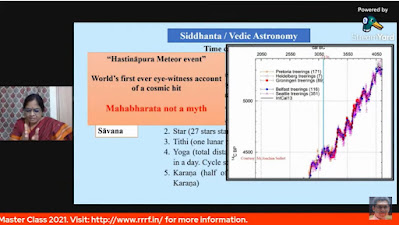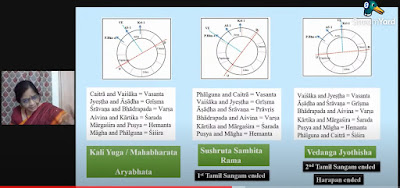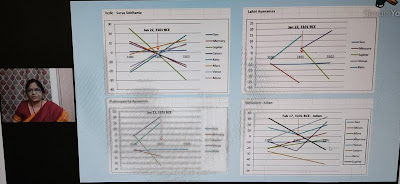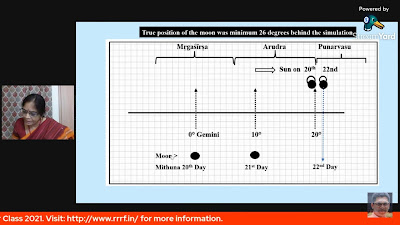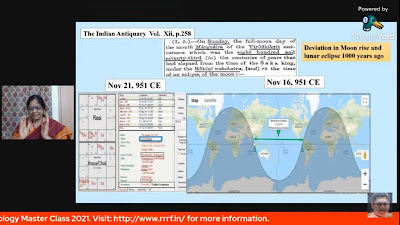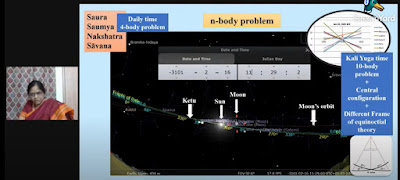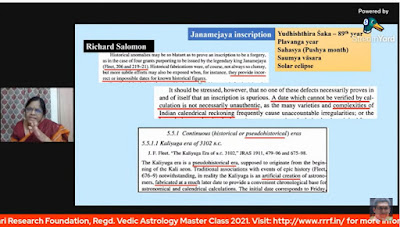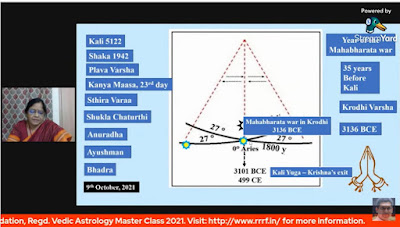In Part 1of this series, the purpose of Gunung Padang Megalithic Structure (GPM) as an observation platform for Mt. Pushpitaka (Mt. Gede) was discussed based on the Ramayana verses. The surprising element in the Ramayana verses is the absence of mention of the incredible structure at GPM. The text does mention about two mountains close to each other – Mt. Pushpitaka and Mt. Suryavān – near the equator but there is hardly any reference to the unique man-made structure at GPM that is now found to be in existence for more than 20,000 years. This makes me wonder whether we are missing out anything in understanding the verses properly. Though I proposed the feasibility of Mt. Gunung Nagara Padang as Mt. Suryavān, certain important evidences and inputs from Indic background make me think that GPM could have been Mt. Suryavān – the Mount of the Sun! This write-up focuses on those evidences.
Javanese interest in astrology – astronomy
Not
known to many is the connection between the people of Java and the people of
Madurai in Tamilnadu in South India. A Sangam age verse in a text called
“Madurai Kānci” dated around 3rd century BCE (on the basis of Māngulam and Arittāpatti inscriptions on the Pandyan
King Nedumchezhiyan, the King extolled
in Madurai Kānci )
refers to the visit of honey-complexioned Javanese to Madurai during a festival
in the month of Chiṭṭirai (when the sun was in sidereal Aries).
Madurai Kānci –
lines 475 to 481
Meaning:
The
honey-coloured “Sāvakar” (people of Java) offered
flowers and incense to the scholarly people who know the past and the future
and can judge the events on the earth and the sky.
The
description refers to scholars who were engaged in astronomy related issues. Only
astronomers of yore watched the sky and the earth to ascertain the way of
Nature. The context is about the city life of Madurai and the astrologers
residing in the city. They were
approached by the Javanese people, presumably to know or discuss about astronomy
and astrology (which is based on astronomy but connects a result to astronomy
events). Presence of astrologers in Madurai is further stated in the text but
the specific reference to the Javanese
of meeting scholars of astronomy makes a surprise read. Offer of flower
and incense continues to be a practice in Java (and throughout Sundaland) in
worship and in paying reverence to others.
This
verse gives an impression of presence of astrology – astronomy knowledge in
Java in pre-common era, though there is absolutely no evidence of it in Java
anytime in the last two millennia. What they probably learned or discussed with
the astrologers of Madurai raise some interesting conjectures.
First of all, the time was the month of Chiṭṭirai (Aries) the time of equinox and peak summer in South India. A 7-day festival was going on at that time as per the text, which continues to be celebrated even today for 10 days and stretching to a month (of Aries). Of particular relevance to Tamil connection was the knowledge of “Hora” that forms the basis of week days and the method of determination of the equinoctial day in another text (Nedunal Vādai) dedicated to the same king, Nedumchezhiyan. Java being a location in Shāka Dwīpa where the early Tamils including Skanda lived, regular communication between the Javanese and the Tamils seemed to have existed at least till 3rd century BCE.
Did the week-day concept evolve in Gunung Padang?
Today
the 7-day week with similarity in the names of the days is used throughout the
world. Though many ancient societies may lay a claim on following the week-days
since antiquity, the concept of how the week-days have evolved exists only
among the Tamil speakers of the Vedic society. The earliest written evidence is
found in Tolkāppiyam, the grammar work of the 3rd Sangam age that
started 3500 years ago, that refers to “Hora” as the basis of time. Pronounced
as “Orai” in Tamil this is based on the premise that the day and the night are
divided into 12 equal parts of an hour each (24 equal parts in all) known as
Hora-s and named after seven planets.
They
are distributed in the order as Saturn, Jupiter, Mars, Sun, Venus, Mercury and Moon,
and are repeated in this order continuously and endlessly for ever, for ages!! The
rationale of this line-up is found in Indic texts such as Surya Siddhānta, as
the orbits of planets one below the other. Though this is not true in reality,
this appears to be how it could have been perceived by the ancient society by
naked eye observation.
Venus
and Mercury were considered to be in lower orbits, because they don’t cross the
sky and appear low. Moon was rightly perceived to be closer to the earth. From
moon to Saturn these celestial entities were arranged in the order as observed
and understood by them. That early society thought that these planets (sun and
moon are also regarded as planets known as ‘Graha-s’ by the Vedic society even
till this date) control each hora of the day one after another.
In
a day the hora-s keep moving one after another for 24 horas. The enumeration
starts from sunrise. The naming of the week days is done on the basis of the hora
at sunrise. For example, if the sun hora is there at the time of sunrise, then
the day is called as Sun’s Day – Sunday. If moon hora is present at the time of
sunrise, the day is called as Monday. Like this other week days have been
named.
In
the table given below, the sequence of 24 Horas is shown between one sunrise
and another. If a day begins with Sun hora (making it Sunday) then the 25th
hora that comes with the next sun rise is Moon hora which makes the next day
Monday! Similarly, the next 25th hora that comes with next sunrise
makes Tuesday and like this other week days have been named. The table given below
shows that the naming of the week days as Sunday, Monday, Tuesday etc can
happen only if the day begins with (the 25th hora) Sun hora, Moon
hora, Mars hora, Mercury hora, Jupiter hora, Venus hora and Saturn hora respectively
for the 7 days and get repeated endlessly.
Distribution of Hora in a week
The
truth behind this series is that this works ONLY near the Equator or within the
tropical zone (in close degrees to the equator) where every subsequent sun rise
comes methodically at the 25th hora! In other words, this concept of
Hora could have been conceived by someone or a society that lived on or near
the Equator and seen specific characteristics changing hour-wise (hora-wise)
for full 24 hours of the day and also seen that a new sunrise begins at the 25th
hora.
Though
this knowledge remains with the Tamil speakers in South India who continue to
use it for predictive purposes, the practical observation and conception of
this theory could not have happened in South India or in any latitudes in the
north or the south owing to the fact that the 25th hora doesn’t
always coincide with the subsequent sunrise in certain months of the year. Looking
around the places close to the current location of Tamil speakers (South India)
to identify the probable region where the observation of the Hora-week-day
concept could have evolved, only the GPM scores as an ideal location for such observation.
Sun-rise at Gunung Padang (Photo courtesy: https://www.flickr.com/photos/tjetjep/15273339116/in/photostream/)
It’s
location in Java (Shāka Dwīpa) where the ancestral Indic people (who have
spoken Tamil or from whom Tamil emerged) and Skanda (who promoted Tamil through
Sangam Assemblies) had lived and its location at 6-degree South of the equator
with an ideal environment for watching sun-rise and sun’s sojourn through the
sky, had enabled generations of people to not only keenly observe Nature but
also observe changes in Nature’s energy with
every passing hour which they named after the seven planets.
The GPM offers an ideal location to observe the movement of the planets in the night sky too. The Ramayana reference to watching sun-rise and moon-rise behind the twin peaks (Gede and Pangrango) does not seem to convey a lazy past time of the pre-historic people but a way of life of a people whose grasp of Nature was far better than what we think of them as being capable.
It
is highly probable that the week day concept evolved in Java (Shāka Dwīpa) with
GPM as the center of evolution of the concept. From there the week-day concept was
taken to India where the early Indic society moved with the arrival of Holocene
and the Indian landmass becoming habitable with the spread of tropical heat. The
residual presence of sky watchers and astrologers in Java having regular contact
with the Tamil speakers of South India as late as the 3rd century
BCE goes to prove the connection with Java in the past and presence of
astrology- astronomy knowledge going back in time to
pre-Holocene days when the earliest Tamil society developed under Skanda in
Southern Madurai whose location was discussed in Part
1 of this series
(to
be continued)










